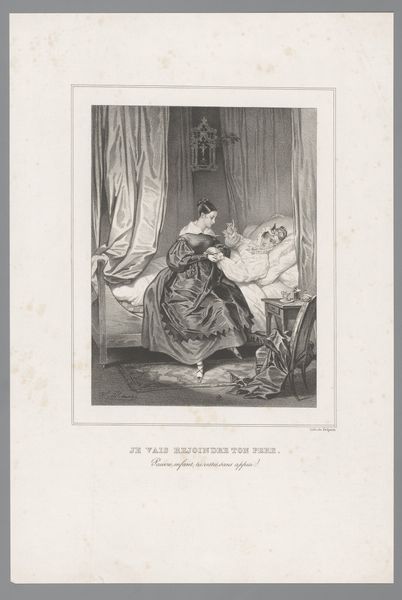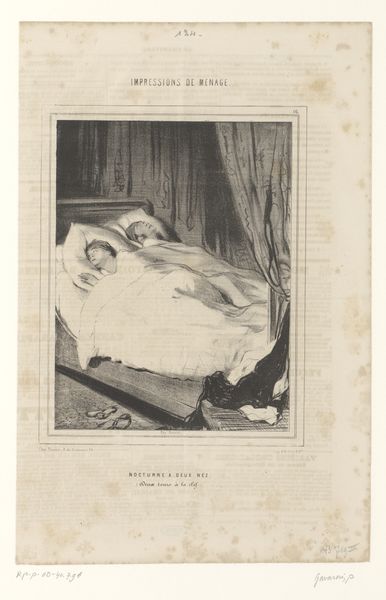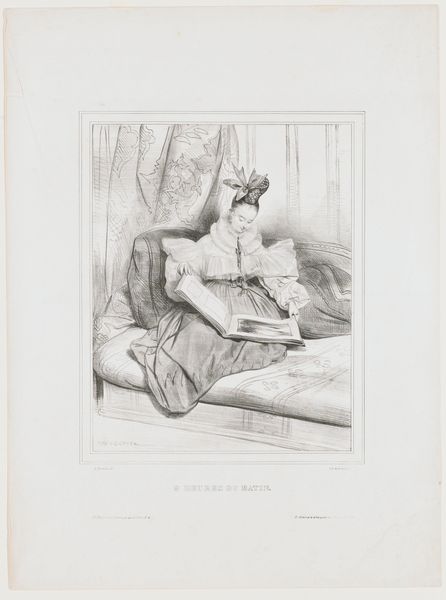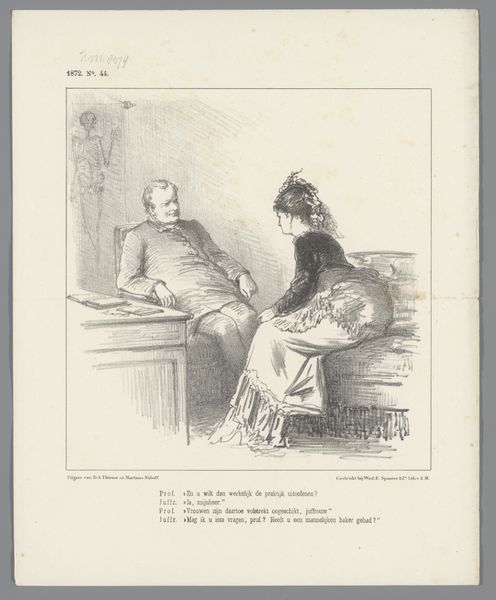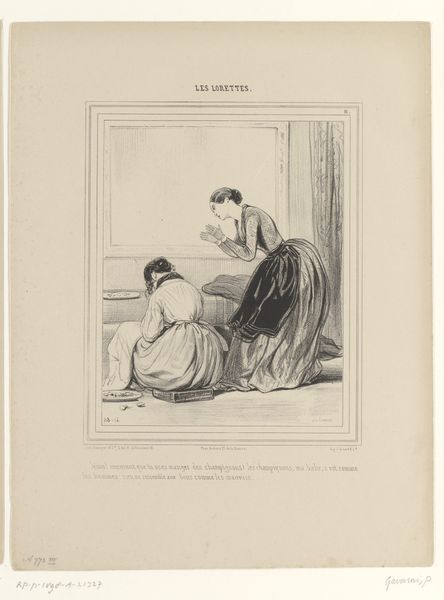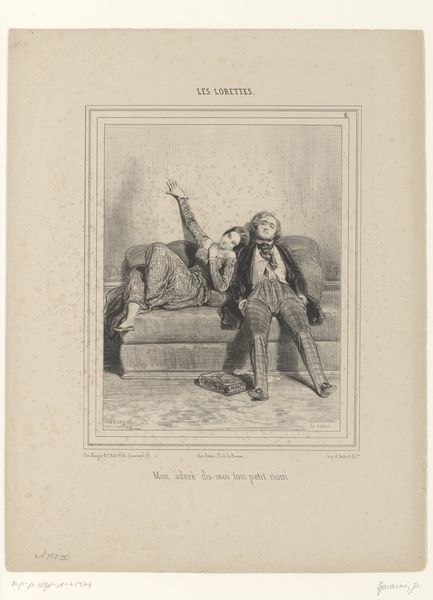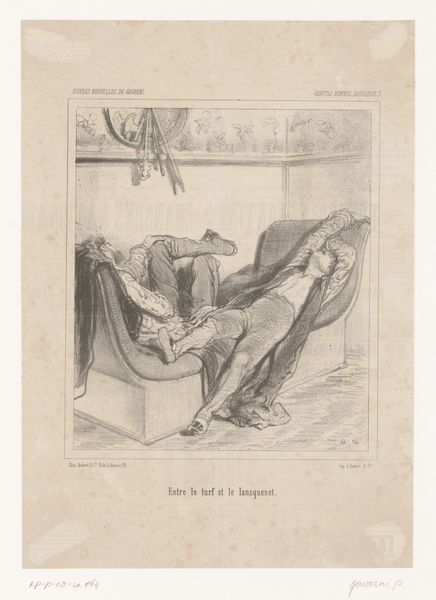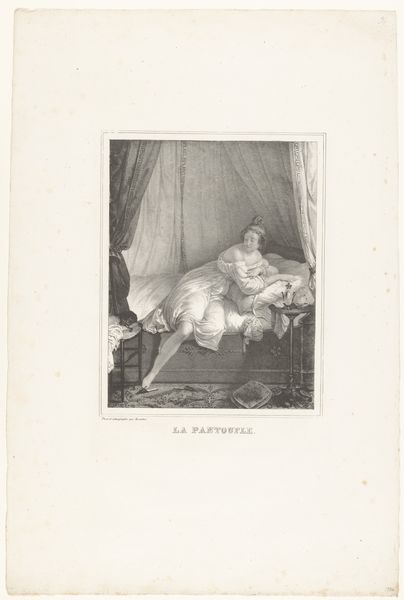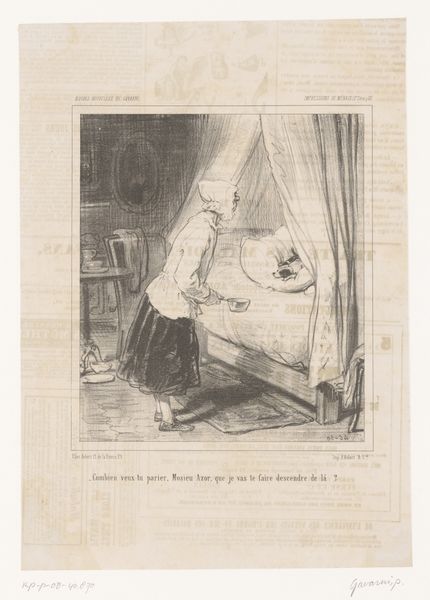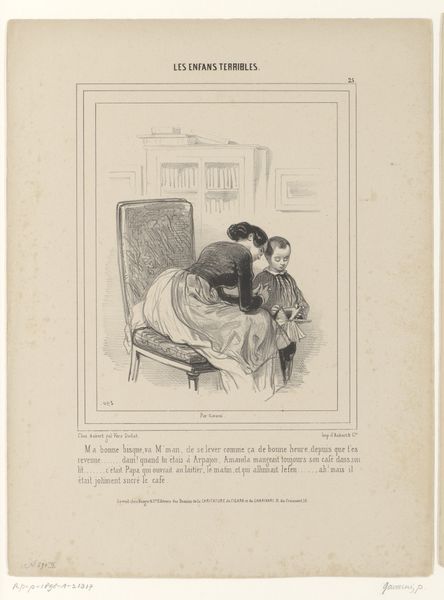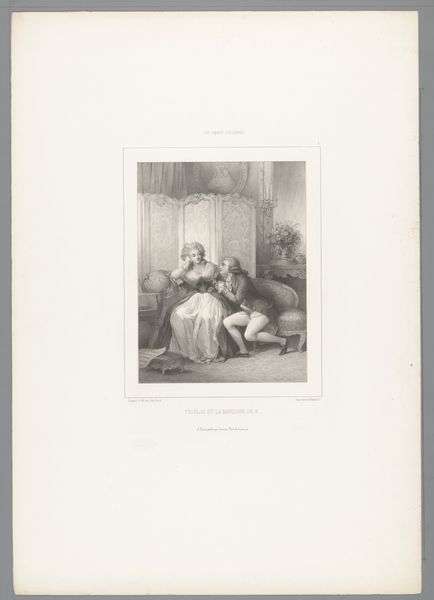
drawing, pencil
#
portrait
#
drawing
#
romanticism
#
pencil
#
genre-painting
Dimensions: height 422 mm, width 285 mm
Copyright: Rijks Museum: Open Domain
Curator: My immediate reaction is a profound sense of tranquility, a quiet moment captured with such delicate detail. It almost feels like stepping into a hushed, personal sanctuary. Editor: And yet, the drawing's peaceful veneer, made using pencil somewhere between 1825 and 1842, speaks volumes about power dynamics and female representation. This artwork, known as "Clara ligt op bed, terwijl de zuster bid," which translates to "Clara lies in bed while the sister prays," by Nicolas Maurin, isn’t simply a scene of domestic piety. Curator: Ah, "domestic piety," yes, on the surface it is. I love how Maurin captures the soft light falling across Clara's face, that dreamy expression, contrasting so vividly with the rigid posture of the praying sister. I wonder, what secrets are hidden behind the closed eyelids? Editor: Well, the context of Romanticism and its fascination with the emotional and the individual provides one layer. But, critically examining who is positioned as vulnerable versus pious, who is seen and unseen, exposes how gendered roles and expectations are reinforced through imagery like this. Curator: Hmmm, interesting! The vulnerability. The way Clara is framed—so still, almost like a porcelain doll, adorned with flowers in her hair… Do you think it’s about reclaiming some sense of agency in sickness, perhaps? Making oneself beautiful despite illness? Or maybe surrendering oneself to what’s greater than human forces. Editor: That surrender, or enforced passivity, is exactly where the discomfort lies for me. The sister's active prayer implies Clara’s inability to act on her own behalf. Who decided she needed intervention rather than empowerment? And is prayer always an act of compassion or sometimes control? Curator: Now that is dark! I hadn't considered that angle! But is it also about comfort? Perhaps Maurin sought to explore different expressions of caring. What’s that quote, um, "To love is not simply to offer the other what one desires for oneself, it’s rather to offer that one something different, but crucial, so it contributes to the growth of the other.” Editor: Agreed, there are multiple layers at play, but the artist's choices –the kneeling position, the book resting open nearby, and those heavy garments—construct a narrative that leans towards a certain power dynamic, a narrative of salvation and, potentially, female subjection. Curator: I suppose I initially saw comfort, now I am considering, is that the intended feeling…or a constructed response based on assumptions and well established historical conventions. Editor: Indeed. Art invites us to probe beneath surfaces, doesn't it?
Comments
No comments
Be the first to comment and join the conversation on the ultimate creative platform.
